An organic compound (A) (C5H7OCl) reacts rapidly with ethanol to give (B) (C7H12O2). (A) also reacts with water to produce an acid which reacts with bromine to give (C ) (C5H8Br2O2). (B) on boiling with H2SO4 forms an acid (D). When (D) is oxidised with KMnO4 an acid (E ) (C4H6O3) is produced. On mild heating, (E ) gives (F) (C3H6O) which cannot be oxidised by ammoniacal AgNO3. Identify the compounds (A) to (F).
(A) ⇒C5H7OCI, Degree of unsaturation: 2∘
(B) ⇒ Degree of unsaturation: 2∘

⇒ (F) (not, aldehyde may be a ketone)
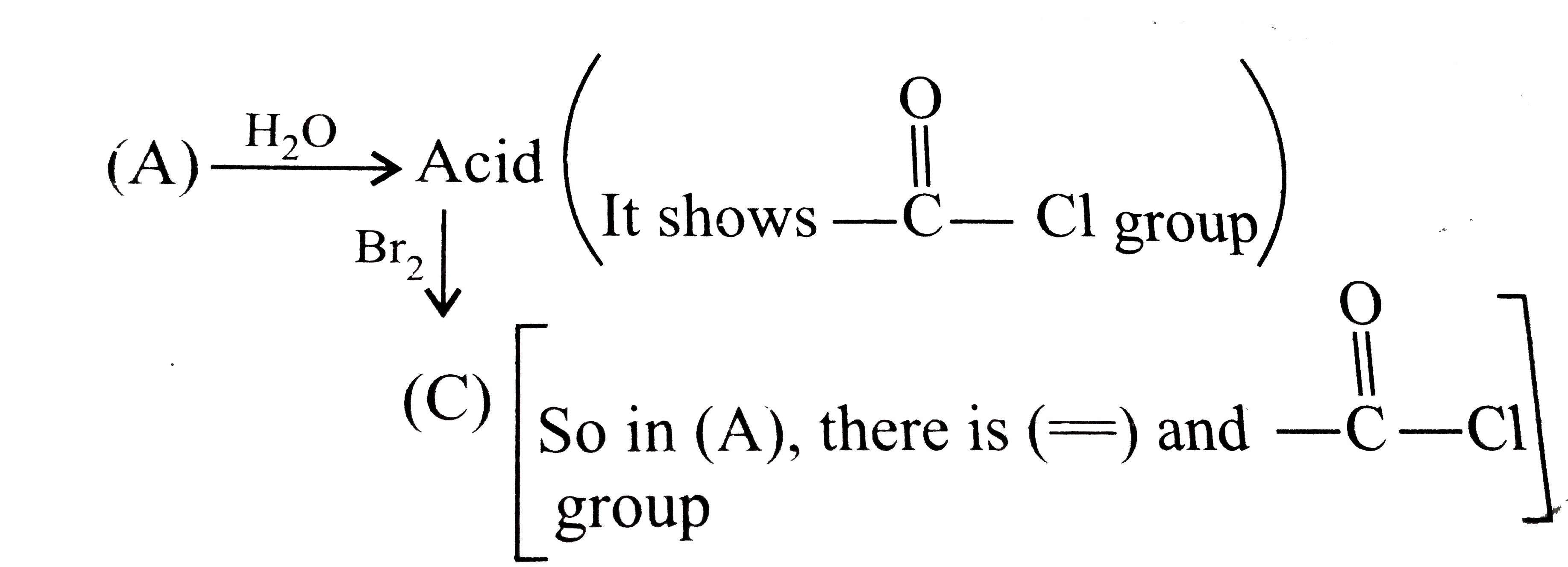
C5H8Br2O2 [This shows C=C ]
(F)⇒ Ketone (three C atoms), only ketone with three C atoms is acetone (CH3−CO−CH3).
So, (E ) can be ⎡⎢
⎢⎣CH3−O∣∣C−CH2−COOH⎤⎥
⎥⎦
because keto acid on heating loses CO2 and gives ketone.
(D) [O]−−→ Acid (E ) C4H6O3 [So, (D) contains (C=C)]
Hence, (D) can be ⎛⎜
⎜⎝CH2=C∣CH3−CH2−COOH⎞⎟
⎟⎠
(A)⇒R−O∣∣C−ClHOC2H5−−−−→R−O∣∣C−(B)(Ester)OC2H5
(A)⇒CH2=C∣CH3−CH2−O∣∣C−Cl
Reactions:

Topper's Solved these Questions
- ALIPHATIC AND AROMATIC ALDEHYDES AND KETONESBOOK - CENGAGE CHEMISTRYCHAPTER - ALIPHATIC AND AROMATIC ALDEHYDES AND KETONESEXERCISE - Exercises Concept Application
20 Videos
- ALIPHATIC AND AROMATIC ALDEHYDES AND KETONESBOOK - CENGAGE CHEMISTRYCHAPTER - ALIPHATIC AND AROMATIC ALDEHYDES AND KETONESEXERCISE - Exercises Linked Comprehension
59 Videos
- ALIPHATIC AND AROMATIC ALDEHYDES AND KETONESBOOK - CENGAGE CHEMISTRYCHAPTER - ALIPHATIC AND AROMATIC ALDEHYDES AND KETONESEXERCISE - Solved Examples
13 Videos
- ALCOHOL,PHENOL AND ETHERSBOOK - CENGAGE CHEMISTRYCHAPTER - ALCOHOL,PHENOL AND ETHERSEXERCISE - Archives Analytical And Descriptive
15 Videos
- AMINESBOOK - CENGAGE CHEMISTRYCHAPTER - AMINESEXERCISE - QUESTION BANK
1 Videos
Similar Questions
An organic compound (A) C5H7OCl reacts rapidly with ethanol to give (B) C7H12O2. (A) also reacts with water to produce acid which reacs with Br2 to give C5H8Br2O2. 'B' on boiling with aqueous H2SO4 formed an acid (C). when (C) is oxidized with KMnO4 to an acid (D) C4H6O3 and CO2 gas are produced. on mild heating, 'D' gives E. E cannot reduce Tollen's reagent. calculate the molecular weight of E.
View SolutionAn organic compound (A) C6H10 on reduction, first give (B) C6H12 and finally (C) C6H14 (A) on reaction with ozone followed by hydrolysis is presence of Zn gives two aldehydes C2H4O (D) and C2H2O2 (E) Oxdation of (B) with acidified KMnO4 gives acid (F) C3H6O2 Determine structures of (A) to (F) with proper reasoning.
View Solution
Knowledge Check
A reagent which reacts differently with CH2O,C2H4O,C3H6O is
ANH2OHBC6H5NHNH2CHCNDNH3A reagent which reacts differently with CH2O,C2H4O,C3H6O is
ANH2OHBC6H5NHNH2CNCNDNH3Compound (A) C8H6O2 on treatment with aq. NaOH followed by acidification gives (B) C8H8O3 which on oxidation gives benzoice acid only :
A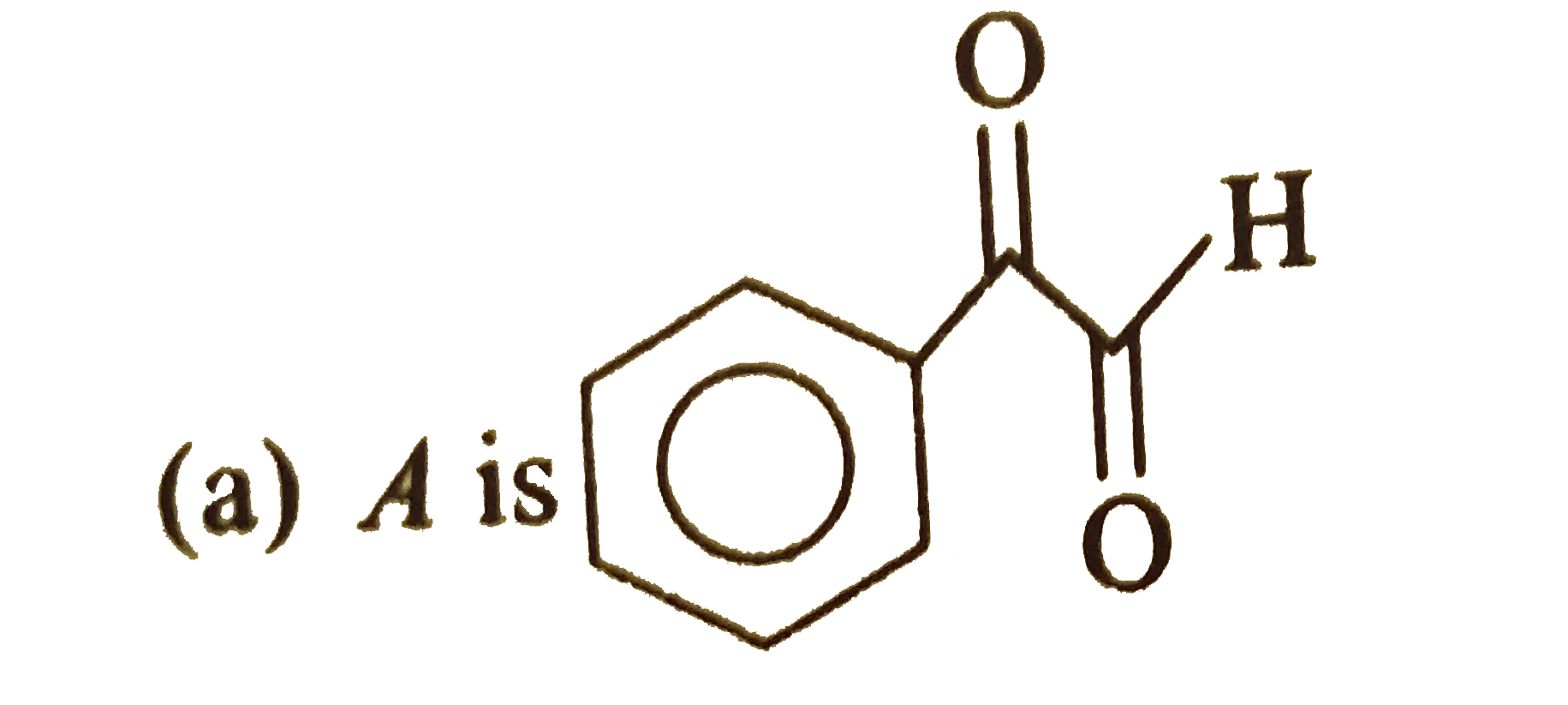 B
B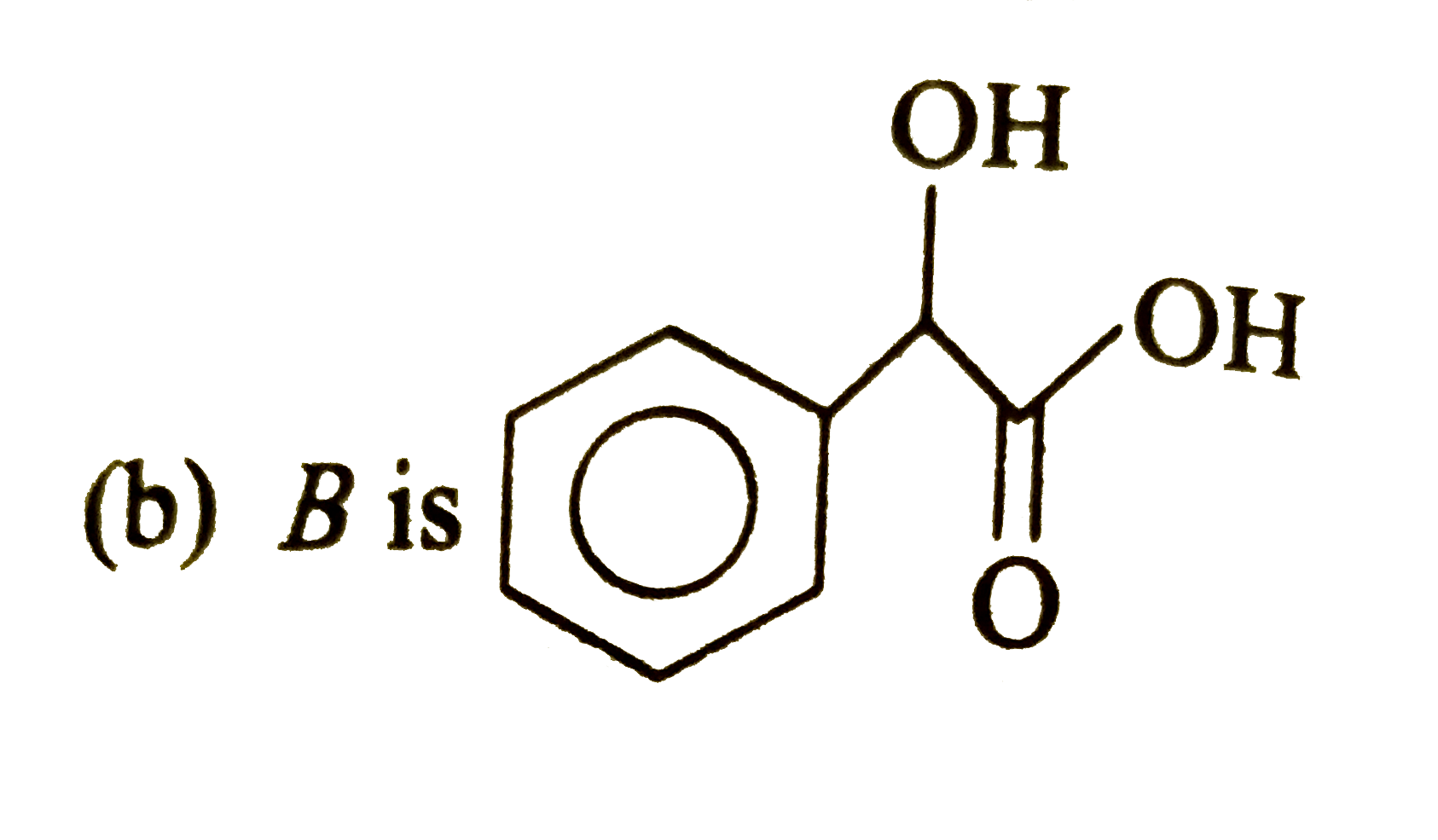 C
C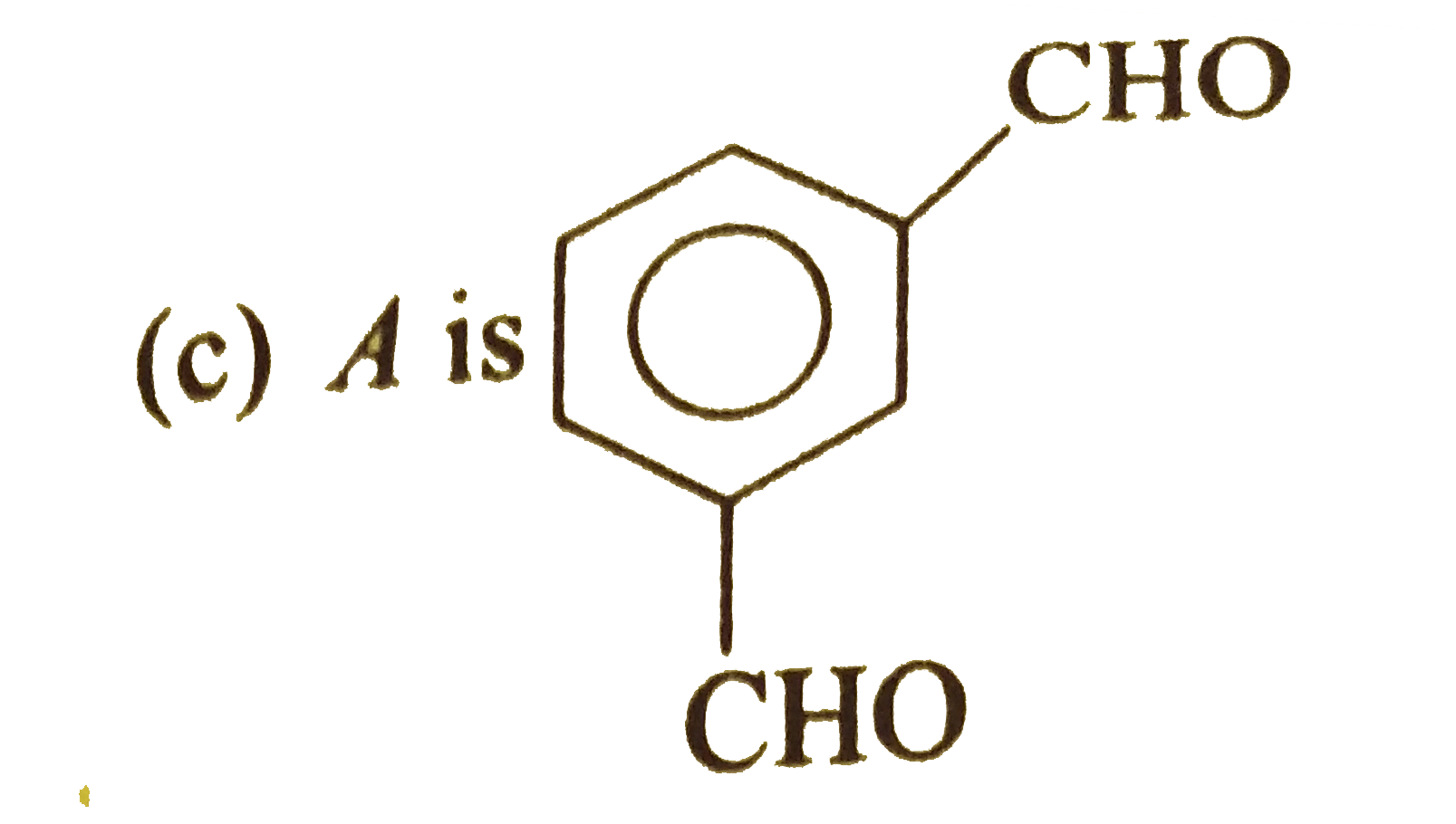 D
D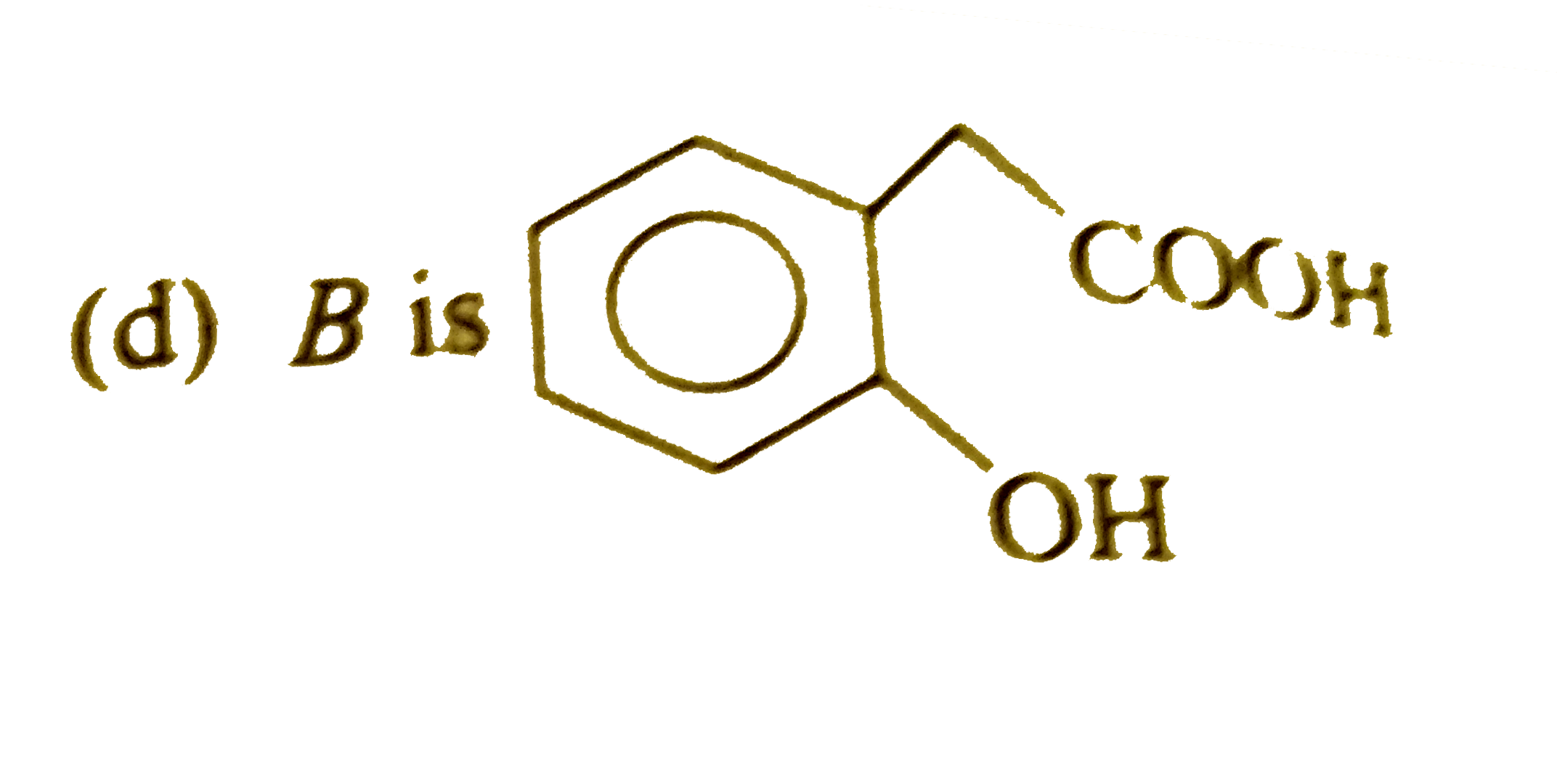
On ozonolysis, an organic compound (A) C6H10 gives two aldehyde (B) C2H4O and (C ) C2H2O2. Determine the structure of A,B and C.
View SolutionAn organci compound C6H4O2NCl(A) reacts with a,la,oo tp gove C6H5O3N(B). On reduction with tin and HCl,(B) gives C6H7ON(C) whereas on milder reduction it gives (D)C6H7O2N, which rearranges in the presence of a mineral acid to give a new compound (E). Identify the various compounds from (A), to (E).
View SolutionAn organic compound A (C4H10O) reacts with HI giving a compound B (C4H9I) which on reduction gives n-butane. Oxidation of compound A gives C (C4H8O) and then an acid D (C4H8O2) . Deduce the structure of A,B,C and D.
View SolutionAn organic compound A (C3H5N) on boiling with alkali gives ammonia and sodium salt of an acid B (C3H6O2). A on reduction gives C(C3H9N) which with nitrous acid gives D (C3H8O). Give the structural formulae of A, B, C and D.
View SolutionBenzene reacts with CH3I in the presence of AlCl3 to give compound (A)(C7H8) which undergas oxidation with alkaline KMnO4 to give an acidic compound (B).(B) reacts with SOCl2 to give (C) which gives (D) with ammonia. The compound (D) on reaction with bromine and alkali froms (E) which reacts with bromnine water to give (F)(C6H4NBr3).(F) reacts with NaNO2 adn HCl and forms (G)(C6H2N2Br3Cl). Additiaon of Kl froms (H) Indenitify the compounds (A) to (H).
View Solution
